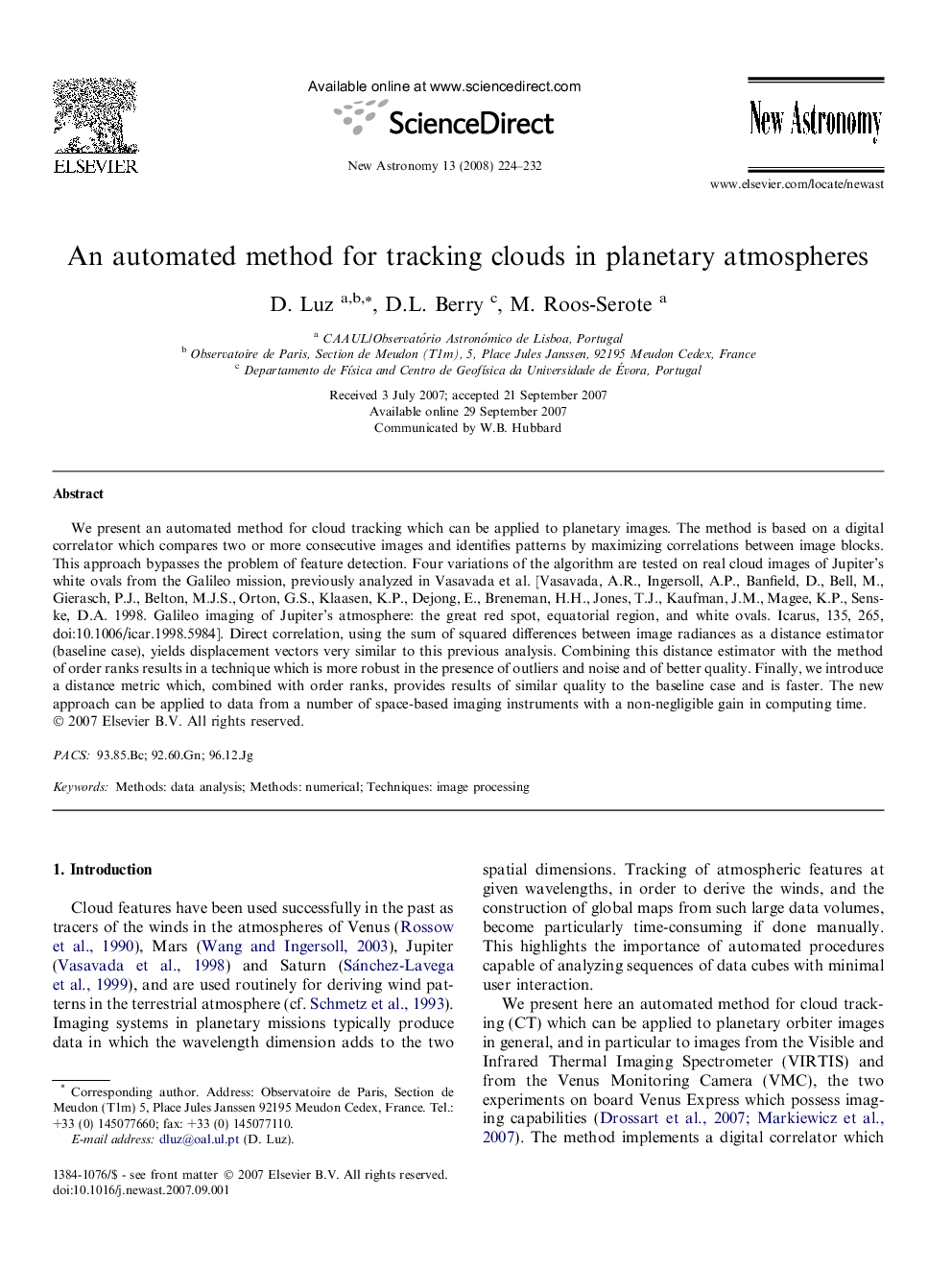| Article ID | Journal | Published Year | Pages | File Type |
|---|---|---|---|---|
| 1779301 | New Astronomy | 2008 | 9 Pages |
Abstract
We present an automated method for cloud tracking which can be applied to planetary images. The method is based on a digital correlator which compares two or more consecutive images and identifies patterns by maximizing correlations between image blocks. This approach bypasses the problem of feature detection. Four variations of the algorithm are tested on real cloud images of Jupiter's white ovals from the Galileo mission, previously analyzed in Vasavada et al. [Vasavada, A.R., Ingersoll, A.P., Banfield, D., Bell, M., Gierasch, P.J., Belton, M.J.S., Orton, G.S., Klaasen, K.P., Dejong, E., Breneman, H.H., Jones, T.J., Kaufman, J.M., Magee, K.P., Senske, D.A. 1998. Galileo imaging of Jupiter's atmosphere: the great red spot, equatorial region, and white ovals. Icarus, 135, 265, doi:10.1006/icar.1998.5984]. Direct correlation, using the sum of squared differences between image radiances as a distance estimator (baseline case), yields displacement vectors very similar to this previous analysis. Combining this distance estimator with the method of order ranks results in a technique which is more robust in the presence of outliers and noise and of better quality. Finally, we introduce a distance metric which, combined with order ranks, provides results of similar quality to the baseline case and is faster. The new approach can be applied to data from a number of space-based imaging instruments with a non-negligible gain in computing time.
Related Topics
Physical Sciences and Engineering
Physics and Astronomy
Astronomy and Astrophysics
Authors
D. Luz, D.L. Berry, M. Roos-Serote,
